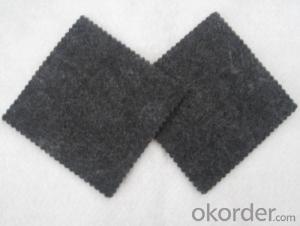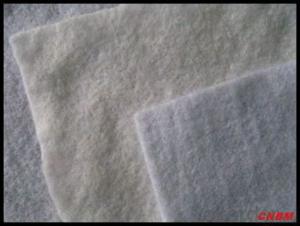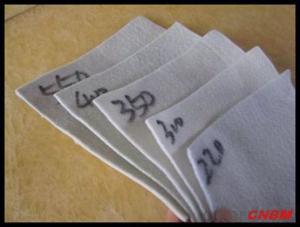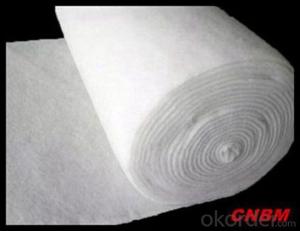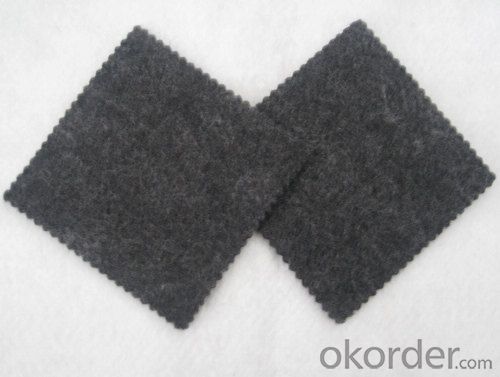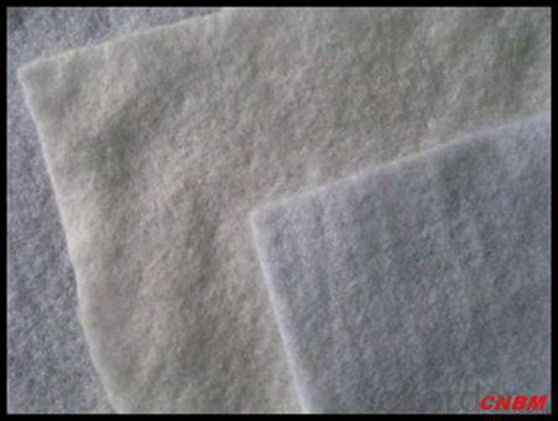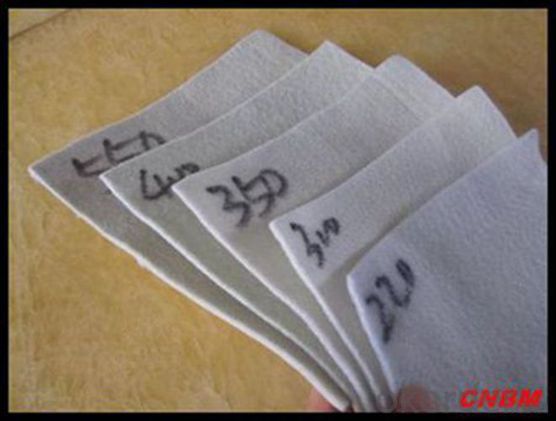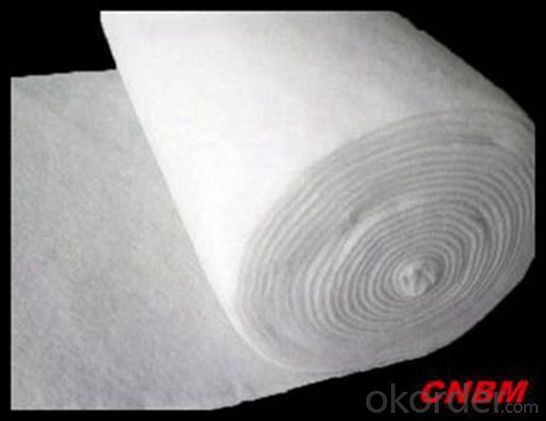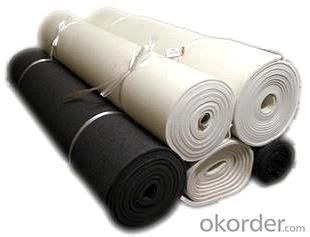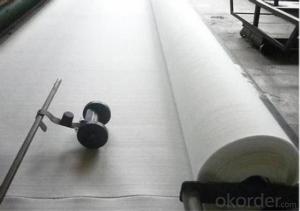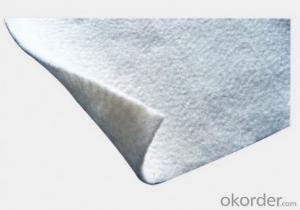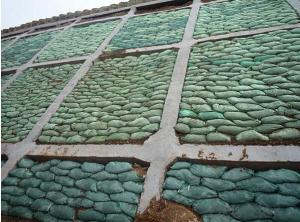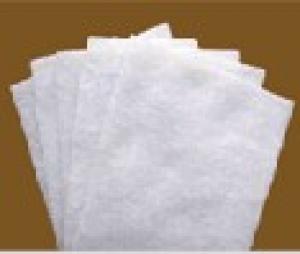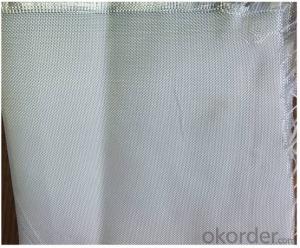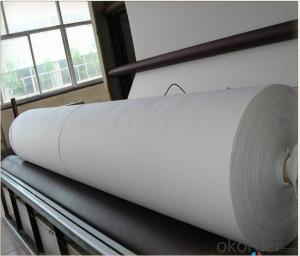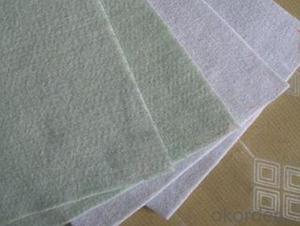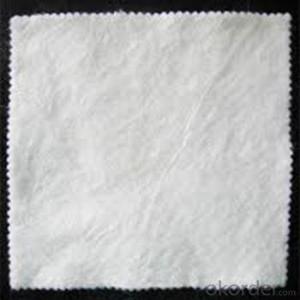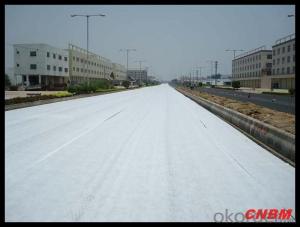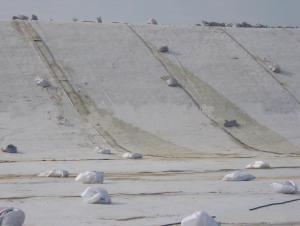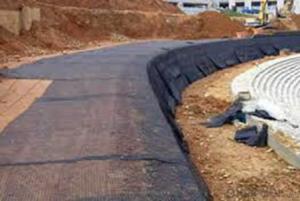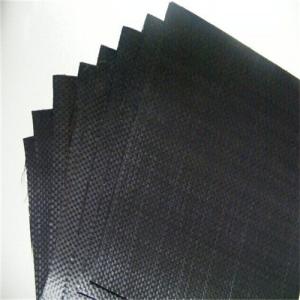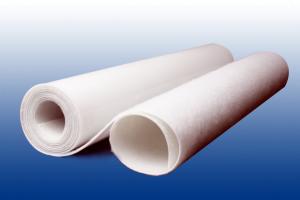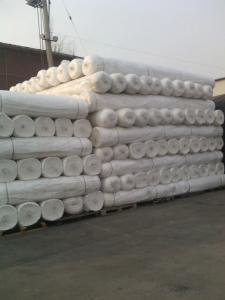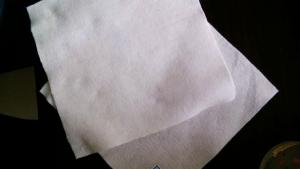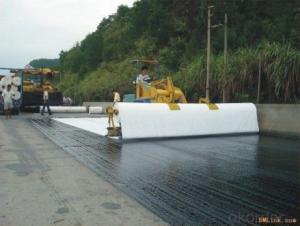Home Depot Short Non-Woven Geotextile Fabric for Road Construction
- Loading Port:
- China main port
- Payment Terms:
- TT OR LC
- Min Order Qty:
- 1000 m²
- Supply Capability:
- 1000000 m²/month
OKorder Service Pledge
OKorder Financial Service
You Might Also Like
Specification
Geotextiles made of virgin Polypropylene PP, Polyester PES
Under request, the geotextile is produced with black carbon to protect from UV
Features
1)Geotextile can make the water flow easily, and form a drainage channel in the soil, and then make the liquid and gas out of the soil.
Make use of its pulling resistance and deformation resistance that can strength the soil to reinforce the stability of the construction structure and improve the soil’s quality.
2) Make the focus proliferate, deliver and decompose efficiently and prevent the soil from destruction from outside factor.
3) Prevent the top and bottom layer’s gravel, soil and concrete from mixer.
4) The mesh cannot be plugged easily – for the strain and moving quality of the network that formed by the antitype fiber.
5) High soaking quality—at the pressure of soil, it also can keep good soaking quality.
6) Corrosion resistant – using the polypropylene and polyester as raw material, it can resist the sour and aid, erosion, boring and oxidation.
7) The construction is easy; the weight is light, convenient for using, and it making construction easy.
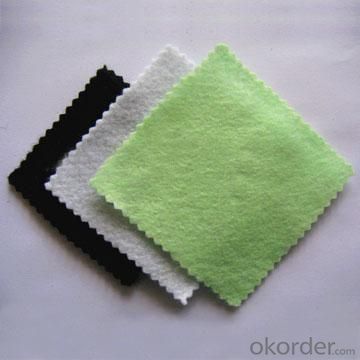 Non Woven Geotextile Product Show:
Non Woven Geotextile Product Show:
Packaging & Shipping
Packing: PLASTIC FILM INSIDE, AND WOVEN BAG OUTSIDE
Shipping: About 15 days after receipt the deposit
Our Service
Quality assurance
1.On a regular basis or as per your request,we entrust national testing agencies to conduct quality inspections
2. Strictly in accordance with the ISO9001-2008 international quality system standard,we monitor and manage the whole process throughout production,quality testing,and measurement to ensure product quality
3. For quality-related construction delay or substandard construction(except for damage or losses due to customer’s responsibility or irresistible natural disasters),we have refunding,replacement,and repair services.We will respond to customers’ feedbacks on quality issues within 24 hours.
Q: What kind of payments does jenor support?
A: T/T, L/C, Cash are accepted.
Q: Do you charge for the samples?
A: Accordeing to our company policy, the samples are free, we only charge the freight fee. And we will return the freight fee during the next order.
Q: Can you produce according to customers' design?
A: Sure, we are professional manufacturer, OEM and ODM are both welcome.
Q: Do you have other products?
A: Yes, please check the pictures:
geotextile fabric
permeability,filtration,easy for construction
ISO and CE certificate
Good quality and competitive price
- Q: What are the different applications of geotextiles in agriculture?
- Geotextiles have various applications in agriculture, including erosion control, soil stabilization, weed suppression, moisture retention, and filtration. They are used as ground covers to prevent soil erosion caused by wind or water, providing stability to slopes and embankments. Geotextiles also help in retaining moisture in the soil, reducing the need for irrigation. Additionally, they act as a barrier to control weed growth, reducing the competition for nutrients and water. Furthermore, geotextiles are employed for filtration purposes, allowing water to pass through while preventing the loss of fine particles. Overall, geotextiles play a crucial role in enhancing agricultural practices and promoting sustainable farming.
- Q: Are geotextiles commonly used in landfills for leachate collection?
- Yes, geotextiles are commonly used in landfills for leachate collection. They play a crucial role in containing and filtering leachate, preventing its migration into surrounding soil and water bodies. Geotextiles provide a permeable barrier that allows leachate to drain while retaining solid waste, ensuring effective management of landfill leachate.
- Q: Are geotextiles poisonous?
- Geotextile is not toxic, the production of geotextile raw materials are polyester (PET) or polypropylene (PP). Polyester and polypropylene have become daily necessities. Many of the mineral water bottles are also produced by PET and PP raw materials.
- Q: What are the key factors to consider when selecting a geotextile?
- The key factors to consider when selecting a geotextile are the intended application, the type and characteristics of the soil, the required strength and durability, and the desired drainage and filtration properties. Additionally, factors like installation methods, project budget, and environmental considerations should also be taken into account.
- Q: What are the advantages of using geotextiles in agriculture?
- Geotextiles offer several advantages in agriculture, including erosion control, weed suppression, moisture conservation, and improved soil condition. They prevent soil erosion by stabilizing slopes and preventing sediment runoff, ensuring the longevity of cultivated areas. Geotextiles also act as a barrier to weed growth, reducing the need for herbicides and manual weeding. Additionally, they aid in conserving moisture by reducing evaporation and maintaining soil moisture levels. Furthermore, geotextiles promote better soil structure and fertility by preventing soil compaction, improving aeration, and facilitating nutrient absorption.
- Q: What are the specifications for geotextiles in drainage projects?
- The specifications for geotextiles in drainage projects typically include factors such as tensile strength, permeability, durability, and UV resistance. The geotextiles should have a high tensile strength to withstand the stress and load from the surrounding soil and water. They should also have a permeable structure to allow water to pass through while preventing soil particles from clogging the drainage system. Durability is crucial to ensure a long service life, and UV resistance helps to maintain the geotextiles' performance even when exposed to sunlight.
- Q: How do geotextiles improve drainage systems?
- Geotextiles improve drainage systems by acting as a filter and separator. They prevent soil particles from clogging the drainage system while allowing water to pass through freely, thereby enhancing the overall drainage efficiency.
- Q: Pvc tube outsourcing geotextile, how to count how much geotextile
- Calculate the circumference of the bottom of the pipe by the diameter of the pipe, and the length of the pipe is multiplied by the length of the pipe, which is the area of the geotextile. Huazhi geotechnical materials manufacturers to answer your questions
- Q: How do geotextiles contribute to soil stabilization in mining areas?
- Geotextiles contribute to soil stabilization in mining areas by providing reinforcement and erosion control. They can be used as a barrier to separate layers of different soil types, preventing mixing and maintaining stability. Geotextiles also help in reducing soil erosion by acting as a filter, allowing water to pass through while retaining fine particles. Additionally, they enhance the load-bearing capacity of the soil, increasing its stability and preventing slope failures.
Send your message to us
Home Depot Short Non-Woven Geotextile Fabric for Road Construction
- Loading Port:
- China main port
- Payment Terms:
- TT OR LC
- Min Order Qty:
- 1000 m²
- Supply Capability:
- 1000000 m²/month
OKorder Service Pledge
OKorder Financial Service
Similar products
Hot products
Hot Searches
Related keywords
